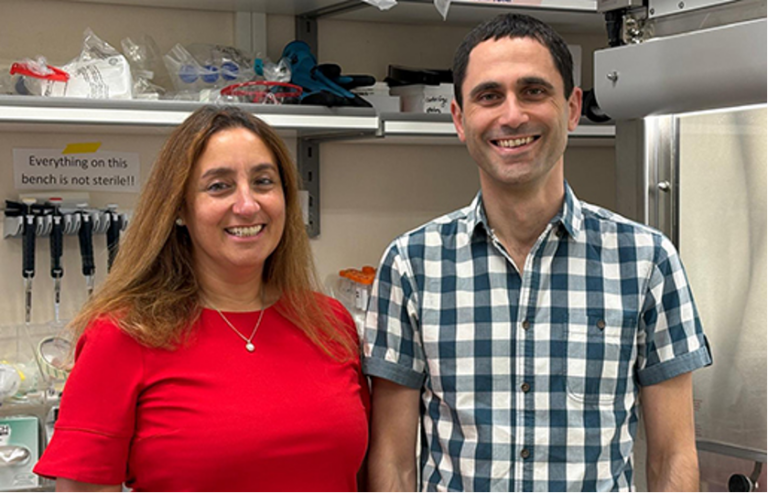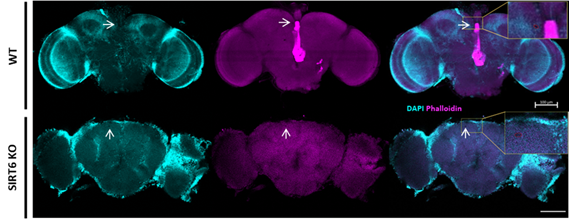Université de Tel Aviv : les adolescents migraineux doivent arrêter de mâcher du chewing gum !

[:fr]Stress, manque de sommeil, tabac, menstruations, alimentation erratique, environnement bruyant, jeux vidéo, de nombreuses hypothèses ont été émises pour expliquer pourquoi les maux de têtes sont fréquents chez les enfants et adolescents. Assurément chacune de ces causes est un facteur de risque. Mais il en est un auquel on ne penserait pas spontanément : le chewing gum. Le Dr Nathan Watemberg, du centre médical Meir, associé à l’université de Tel Aviv a eu l’idée de tester chez des jeunes souffrant de maux de tête récurrents l’impact de cette activité masticatoire permanente. « Nous avons remarqué que parmi les jeunes qui se plaignaient de céphalées, un grand nombre étaient des consommateurs invétérés de chewing gum explique le Dr Watemberg.
Le chercheur a donc sélectionné trente jeunes de 6 à 19 ans, auxquels il a demandé d’arrêter pendant un mois leur friandise favorite. Résultat : 26 d’entre eux ont observé une amélioration significative de leurs maux de tête et pour 19, ces douleurs avaient même complètement disparu. Pour valider le résultat le Dr Watemberg a ensuite demandé à ces 26 jeunes de recommencer à mâcher du chewing gum. et les symptômes sont revenus et quelques jours.
Ce n’est pas la première étude qui associe le chewing gum et les céphalées; Deux travaux précédants avait abouti aux mêmes conclusions. L’une d’entre elle reliait cet effet à la sur-stimulation de l’ATM (articulation tempo-mandibulaire), l’autre supposait que l’aspartam était en cause. Pour le Dr Watemberg, c’est la première explication qui est la plus probable. Et le médecin de conclure que cette étude peut avoir une application immédiate : chez les jeunes souffrant de céphalées, avant de se lancer dans des batteries de tests ou de prescrire des médicaments, mieux vaudrait tenter un sevrage en chewing gum… Cela pourrait être plus efficace. Et sans effets secondaires !
Source Pediatric Neurology[:en]Teenagers are notorious for chewing a lot of gum. The lip smacking, bubble popping, discarded gum stuck to the sole give teachers and parents a headache. Now, Dr. Nathan Watemberg of Tel Aviv University-affiliated Meir Medical Center has found that gum-chewing teenagers, and younger children as well, are giving themselves headaches too. His findings, published in Pediatric Neurology, could help treat countless cases of migraine and tension headaches in adolescents without the need for additional testing or medication.
« Out of our 30 patients, 26 reported significant improvement, and 19 had complete headache resolution, » said Dr. Watemberg. « Twenty of the improved patients later agreed to go back to chewing gum, and all of them reported an immediate relapse of symptoms. »
Right under our noses
Headaches are common in childhood and become more common and frequent during adolescence, particularly among girls. Typical triggers are stress, tiredness, lack of sleep, heat, video games, noise, sunlight, smoking, missed meals, and menstruation. But until now there has been little medical research on the relationship between gum chewing and headaches.
At Meir Medical Center’s Child Neurology Unit and Child Development Center and community clinics, Dr. Watemberg noticed that many patients who reported headaches were daily gum chewers. Teenage girl patients were particularly avid chewers — a finding supported by previous dental studies. Dr. Watemberg found that in many cases, when patients stopped chewing gum at his suggestion, they got substantially better.
Taking a more statistical approach, Dr. Watemberg asked 30 patients between six and 19 years old who had chronic migraine or tension headaches and chewed gum daily to quit chewing gum for one month. They had chewed gum for at least an hour up to more than six hours per day. After a month without gum, 19 of the 30 patients reported that their headaches went away entirely and seven reported a decrease in the frequency and intensity of headaches. To test the results, 26 of them agreed to resume gum chewing for two weeks. All of them reported a return of their symptoms within days.
Two previous studies linked gum chewing to headaches, but offered different explanations. One study suggested that gum chewing causes stress to the temporomandibular joint, or TMJ, the place where the jaw meets the skull. The other study blamed aspartame, the artificial sweetener used in most popular chewing gums. TMJ dysfunction has been shown to cause headaches, while the evidence is mixed on aspartame.
Gumming up the works
Dr. Watemberg favors the TMJ explanation. Gum is only flavorful for a short period of time, suggesting it does not contain much aspartame, he says. If aspartame caused headaches, he reasons, there would be a lot more headaches from diet drinks and artificially sweetened products. On the other hand, people chew gum well after the taste is gone, putting a significant burden on the TMJ, which is already the most used joint in the body, he says.
« Every doctor knows that overuse of the TMJ will cause headaches, » said Dr. Watemberg. « I believe this is what’s happening when children and teenagers chew gum excessively. »
Dr. Watemberg says his findings can be put to use immediately. By advising teenagers with chronic headaches to simply stop chewing gum, doctors can provide many of them with quick and effective treatment, without the need for expensive diagnostic tests or medications.
American Friends of Tel Aviv University (www.aftau.org) supports Israel’s leading, most comprehensive and most sought-after center of higher learning, Tel Aviv University (TAU). Rooted in a pan-disciplinary approach to education, TAU is internationally recognized for the scope and groundbreaking nature of its research and scholarship — attracting world-class faculty and consistently producing cutting-edge work with profound implications for the future. TAU is independently ranked 116th among the world’s top universities and #1 in Israel. It joins a handful of elite international universities that rank among the best producers of successful startups.
[:]







